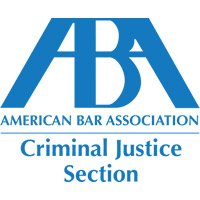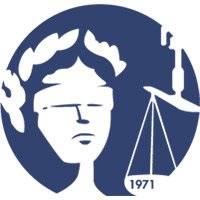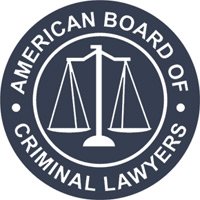“OTHER CRIMES” EVIDENCE [RULE 404(b)]
Huddleston v. U.S., 485 U.S. 681, 108 S.Ct. 1496, 99 L.Ed.2d 771 (1988).
A trial court need not decide for itself whether an accused committed an extraneous offense under Rule 404(b) before admitting such “other crimes” or misconduct evidence, instead that “such evidence should be admitted if there is sufficient evidence to support a finding by the jury that the defendant committed the similar act.”
The court held that unlike the required preliminary showing under Rule 104(a) for the admission of co-conspirator’s statements, see Bourjaily v. U.S., 483 U.S. 171, 107 S.Ct. 2775, 97 L.Ed.2d 144 (1987); no such Rule 104(a) preliminary determination need be made at all prior to admitting “other crimes” evidence under Rule 404(b).
“We conclude that a preliminary finding by the court that the Government has proved the act by a preponderance of the evidence is not called for under Rule 104(a). This is not to say, however, that the Government may parade past the jury a litany of potentially prejudicial similar acts that have been established or connected to the defendant only by unsubstantiated innuendo. Evidence is admissible under Rule 404(b) only if it is relevant.”
Procedurally, the Supreme Court placed its stamp of permiture upon an after-the-fact determination under Rule104(b).
“In determining whether the Government has introduced sufficient evidence to meet Rule 104(b), the trial court neither weighs credibility nor makes a finding that the Government has proved the conditional fact by a preponderance of the evidence. The court simply examines all the evidence in the case and decides whether the jury could reasonably find the conditional fact …by a preponderance of evidence…The trial court has traditionally exercised the broadest sort of discretion in controlling the order of proof at trial, and we see nothing in the Rules of Evidence that would change this practice. Often the trial court may decide to allow the proponent to introduce evidence concerning a similar act, and at a later point in the trial assess whether sufficient evidence has been offered to permit the jury to make the requisite finding. If the proponent has failed to meet this minimal standard of proof, the trial court must instruct the jury to disregard the evidence.
As if this were not a sufficient exercise in sophistry, the Court went on to note [quoting from Bourjaily]:
“We emphasize that in assessing the sufficiency of the evidence under Rule 104(b), the trial court must consider all evidence presented to the jury. ‘[I]ndividual pieces of evidence, insufficient in themselves to prove a point, may in cumulation prove it. The sum of an evidentiary presentation may well be greater than its constituent parts.”
To console the citizen’s understandable concern regarding such cavalier handling of such prejudicial evidence, the Court offered the following:
“We share petitioner’s concern that unduly prejudicial evidence might be introduced under Rule 404(b)…. We think, however, that the protection against such unfair prejudice emanates not from a requirement of a preliminary finding by the trial court, but rather from four other sources: first, from the requirement of Rule 404(b) that the evidence be offered for a proper purpose; second, from the relevancy requirement of Rule 402- as enforced through Rule 104(b); third, from the assessment the trial court must make under Rule 403 to determine whether the probative value of the similar acts evidence is substantially outweighed by its potential for unfair prejudice… and fourth, from Federal Rule of Evidence 105, which provides that the trial court shall, upon request, instruct the jury that the similar acts evidence is to be considered only for the proper purpose for which it was admitted.”
Note the operation of these protections from the admission of unfairly prejudicial evidence.
U.S. v. Simon, 839 F.2d 1461 (11th Cir. 1988).
“[The defendants]… maintain that the district court committed reversible error in admitting testimony that each [defendant] worked at [an oil and gas company]. This testimony contains evidence suggesting that some of the [defendants] were instrumental in accomplishing a fraud on the customers of the former companies. The government however, did not argue that [those defendants] had the requisite intent to characterize their actions[at the oil company] as criminal. The government claims it sought to introduce evidence of the [defendants’] ‘prior acts,’ i.e. their mere participation, however innocent [sic], in the scheme at U.S. Oil.”
“Before a district court can admit evidence of [a defendants’] prior acts, the prosecution must convince the court that 1) there was a proper purpose for introducing the evidence, 2) the [defendants] actually did the prior acts and [sic],
3) the probative value of introducing the evidence outweighs any prejudicial effect the evidence might have. The propriety of the lower court in admitting this evidence turns on the purpose for which the ‘prior acts’ were introduced. The appellants contend that the government introduced their participation in the U.S. Oil scheme simply to show that they ‘acted in conformity therewith’ at Alaska Oil. Rule 404(b) of the Federal Rules of Evidence makes clear that a court cannot admit evidence of a prior act to show that the defendant acted similarly. The government, on the other hand, contends that the prior act evidence introduced at trial merely showed that the appellants knew of the government investigation of U.S. Oil and of the indictment of several employees at the company. Thus, the government argues, the Court properly admitted evidence of the [defendants] knew of the government’s investigation and subsequent indictment of employees for fraud at U.S. Oil is certainly relevant since the evidence helps to determine whether appellants had the requisite intent to defraud in the instant case.” U.S. v. Simon, 839 F.2d 1461 (11th Cir. 1988) (emphasis added) (citations omitted).
Therein lies the danger created by Huddleston regardless of remaining safeguards. A more practical and honest approach is suggested by the Court of Appeals for the District of Columbia. Thompson v. U.S., 546 A.2d 414, (D.C.App.1988). The court found that an examination of four issues regarding the admissibility of ‘prior acts’ to show intent, as opposed to propensity to act in conformity therewith, “is helpful in resolving whether other crimes should be admitted.”
“These issues are:
- whether, and to what degree, intent as an issue can be distinguished from predisposition to commit the crime;
- whether intent is a genuine, material and important issue, rather than a merely formal one;
- whether the trial judge made his decision whether or not to admit that evidence at an appropriate time, when information as to all pertinent factors was available, and
- whether the trial judge’s instructions to the jury could and did resolve any issue of prejudice.” FED. R. EVID. Rule 105.. U.S. v. Kasowis, 503 F.2d 1096 (5th 1974).
Examples:
(1) System, Scheme, Common Plan, Design.
U.S. v. McClure, 546 F.2d 760 (5th Cir. 1977).
Defendant entitled to show Government witness had coerced others into selling drugs to show scheme and modus operandi of prosecution’s witness.
U.S. v. Thompson, 503 F.2d 1096 (5th Cir. 1974).
Cf U.S. v. Goodwin, 492 F.2d 1142, 1153 (5th Cir. 1974) (stating, “When the prosecution seeks to prove design or plan by the doing of similar acts, more is required than mere similarity that may suffice for showing intent”).
U.S. v. Hall, 653 F.2d 1002 (5th Cir. 1981).
(2) Intent.
U.S. v. Polite, 489 F.2d 679 (5th Cir. 1974).
Where evidence of “other crimes” [“extrinsic offense evidence”] is offered as “to the issue of intent” the strict requirements of U.S. v. Broadway, 477 F.2d 991, 995 (5th Cir. 1973) (requiring that the “elements” of the extraneous offense “include the essential elements of the offense charged”) have been abandoned and replaced by a two-step test of admissibility.
In U.S. v. Beechum, 582 F.2d 898 (5th Cir. 1978), the en banc Fifth Circuit overruled Broadway holding that where “other crimes” evidence is offered on the issue of intent that there is no longer any requirement that the “physical elements” of the offense be “identical,” but under Rule 404(b), there is now a two-step analysis, requiring that:
-
RELEVANCY:
The evidence of the “extrinsic offense” is “relevant” to an issue other than the defendant’s character, and if offered as to the issue of “intent”, then all that need to be established is that the “extrinsic offense” requires the same “intent” as the crime charged. The reasoning being that such evidence makes it less likely the defendant engaged in the charged conduct with “lawful intent”. This would be in issue, however, only where the defense raises same, such as where the defendant alleges he committed such acts only in rebuttal, in order to insure such issue is in fact raised. U.S. v. Halper, 585 F.2d 1280 (2d Cir. 1978).
-
BALANCING TEST:
Applying the balancing test of FED. R. EVID Rule 403, the probative value is not substantially outweighed by the danger of prejudice. The Beechum Court expressly recognizes that the “probative value” would be slight where intent could be established by:
- other evidence,
- stipulations,
- inferences, or is
- not contested by the
No prejudice that the defendant committed the act need be found before admitting 404(b) “other crimes.” Huddleston v. U.S., 103 S.Ct. 1496 (1988).
Other circuits on the other hand, appear to retain the more stringent “pre-rule” test of admissibility requiring:
- That the conduct was “similar” and close in time,
- That this be shown by clear and convincing evidence, and
- That the probative value outweighs the prejudice impact [Rule 403 Balancing Test].
U.S. v. Herrell, 588 F.2d 711 (9th Cir. 1978).
(3) Motive.
Cantrell v. U.S., 323 F.2d 613 (D.C. Cir. 1963).
(4) Identity.
See U.S. v. Silvan, 580 F.2d 144 (5th Cir. 1978) (reversible error to admit drug negotiations after sale in which defendant was charged, since defendant’s sole defense was mistaken identity, intent was not a material issue, nor was the other crime so distinctive that it would be relevant to identity as the handiwork of defendant).
Texas Law In Texas state courts, both the initial decision as to admissibility of extraneous offense evidence and jury determination as to weight and credibility (via a charge) are conducted under the “beyond a reasonable doubt” standard.
George v. State, 890 S.W.2d 73, 76 (Tex. Cr. App. 1994) (jury determination);
Harrell v. State, 884 S.W.2d 154, 160 (Tex. Cr. App. 1994) (admissibility).
The procedure for objecting to admission and for preserving error regarding extraneous offense evidence is outlined in Montgomery v. State, 810 S.W.2d 372 (Tex. Cr. App. 1991) (on rehearing). Montgomery, in particular, should be committed to memory.











